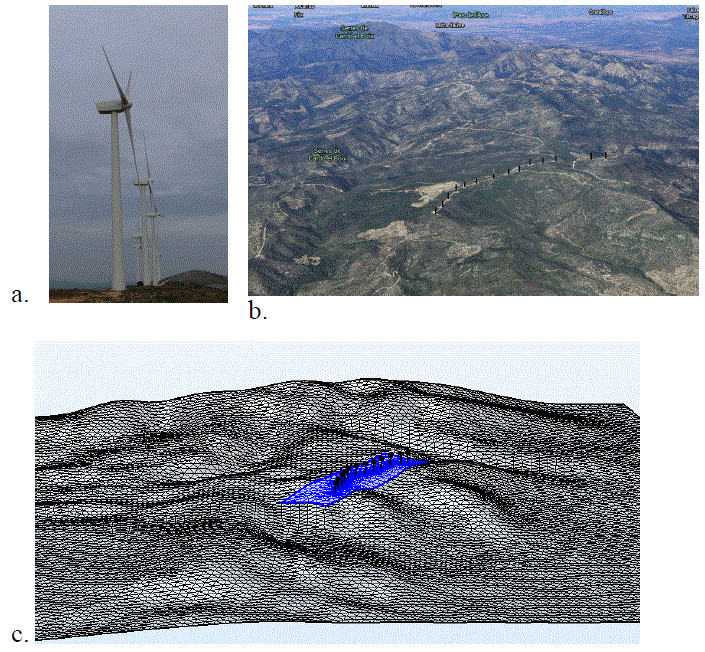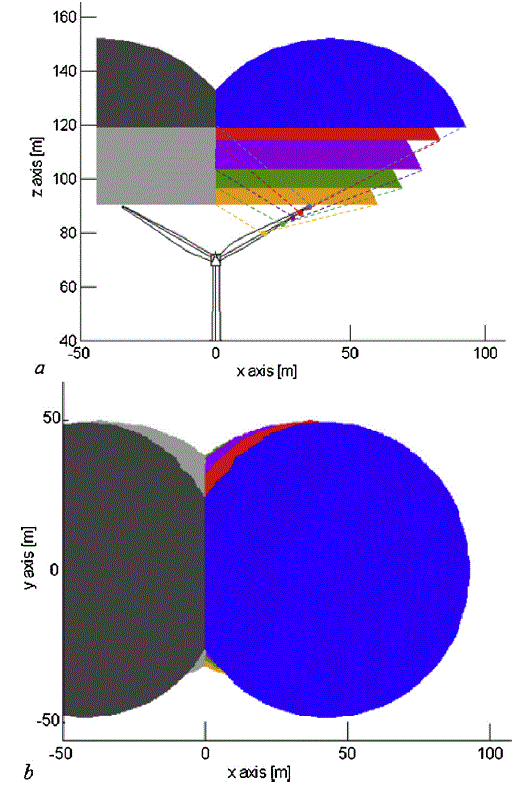Self Consistent Leader Inception and Propagation Model -SLIM-
Modeling the incidence of lightning flashes to grounded structures
SLIM is a state-of-the-art, physics-based, self-consistent model to simulate the inception and propagation of upward connecting positive leaders (from any ground-based object) under lightning storms, originally proposed by Marley Becerra and Vernon Cooray at the Division for Electricity and lightning Research, Uppsala University based on the following publications:
[1] Becerra, M. ; Cooray, V.; "
Time dependent evaluation of the lightning upward connecting leader inception
" J. Phys. D: Appl. Phys. 2006, 39, pp. 4695-4702. doi:10.1088/0022-3727/39/21/029
[2] Becerra, M.; Cooray, V.; "
A self-consistent upward leader propagation model
", J. Phys. D: Appl. Phys, 39, 2006, 3708-3715
[3] Becerra, M.; Cooray, V.; "
A simplified physical model to determine the lightning upward connecting leader inception
" IEEE Transactions on Power Delivery, Volume 21, Issue 2, April 2006, Page(s):897 -908, ISSN: 0885-8977
The practical implementation of SLIM for analysis of complex grounded structures is also based on:
[4] Becerra, M. ; Cooray, V.; Hartono, Z.; “
Identification of the lightning vulnerable points on complex grounded structures
”, Journal of Electrostatics, 65, pp. 562-570, 2007.
[5] Becerra, M. ; Cooray, V.; Roman, F.; “
Lightning striking distance of complex structures
”, IET Generation, Transmission and Distribution, 2, (1), 2008, pp. 131-138..
[6] Becerra, M.; "
On the Simulation of the Lightning Strikes to Complex Grounded Structures
", COMSOL Conference Proceedings, 2011, pp. 1-4

In contrast to the leader progression models [Dellera and Garbagnati, 1990, Rizk, 1994], SLIM self-consistently computes the upward connecting leader physical parameters. The charge per unit length, potential gradient, channel radius, injected current and propagation velocity of the upward connecting positive leader are self-consistently computed as it propagates towards the downward lightning leader.
The predictions of the model have been validated with the results of an altitude rocket triggered lightning experiment [Lalande et al., 2000]. A good agreement between the predictions of the model and the measured upward leader current, the upward initiation time and the interception point between both leaders was found [1,2].
We are continuosly improving SLIM
SLIM has evolved with time as our understanding on the lightning attachment process improved and as we developed better models. SLIM has evolved from a first model published in [3] to evaluate the upward leader inception under background electric fields that do not change significantly during the upward leader propagation. As our first approach to the subject, the first model in [3] assumed that the background electric fields do not change significantly during the upward leader propagation (i.e. inception is evaluated under static conditions). We used that assumption since previous models (Eriksson, Dellera and Garbagnati, Rizk) had also neglected the effect of the rate of change of the electric field on the leader inception process in lightning. Thus, our first model follows a rough approximation to simulate the upward leader inception under the influence of descending downward stepped leaders (downward lightning). However this “static” electric field condition applies only to the case of upward leader initiation from tall towers (self-initiated upward lightning) and rocket triggered experiments under thunderclouds (classical rocket triggered lightning). For this reason, we would like to recommend that the methodology described in [3] is not used to analyse leader inception under downward lightning since it delivers underestimated striking distances.
In order to properly simulate the upward leader inception under the influence of descending downward stepped leaders (downward lightning), the model was later improved in [2, 3]. First, the original model was modified to account the “dynamic” variation of the upward leader properties and the consideration of the space charge created by streamers and aborted leaders under the changing electric field produced by the descent of the downward leader [2]. Second, a self-consistent calculation of the physical parameters of the leader channel was implemented such that the model could simulate not only the initiation but also the continuous propagation of upward positive connecting leaders [3]. Thus, the original model turned into a self-consistent leader inception and propagation model. A detailed description of SLIM can be found in Chapter 4 in V. Cooray's Lightning Protection Book .
SLIM has been used in multiple peer-reviewed studies dealing (among others) with the discussion of early streamer terminals , the effect of the glow corona space charge on upward lightning , the interaction of lightning with humans , the velocity of upward lightning leaders , among others.
Currently, SLIM has been succesfully used to evaluate the physical conditions of inception and propagation of upward leaders from any grounded structure during any type of flash: self-triggered upward lightning, nearby-triggered upward lightning, downward lightning, subsequent lightning flashes . The development of SLIM during the last years have focused on the detailed evaluation of different physical phenomena during (glow-to-streamer and streamer-to-leader).
SLIM in a nutshell
SLIM is a COMSOL Multiphysics Application program that uses the COMSOL Livelink to Matlab. The program simulates the initiation and continuous propagation of upward positive leaders considering the time variation in the electric field produced by the descent of the downward leader,as well as the space charge created by streamers and aborted leaders. SLIM has recently been used also to simulate the upward leader inception and propagation conditions under the "static" electrostatic conditions produced by self-triggered upward lightning. It has also been used to evaluate upward leaders initiated by nearby-lightning events.
The transition from streamer to leader discharge (unstable leader inception) is assumed to take place when the charge of any subsequent corona streamer is equal to or larger than 1uC [Gallimberti, 1972]. The total charge in the corona streamer zone is computed with a simplified procedure similar to the one described in [3].
The leader propagation is simulated by evaluating the total corona charge in front of the leader channel and by assuming a relation between the leader current IL and velocity VL [Bondiou and Gallimberti, 1990]. Furthermore, the channel radius aL and the potential gradient EL of each leader segment are calculated during the simulation with the model of the leader channel proposed by Gallimberti [1972]. The downward leader is modelled as a vertical line with charge density given by the equation derived by Cooray et al. [2007], which is a function of the prospective return stroke peak current. A constant downward leader velocity Vdown without stepping is considered. The interception of the downward leader by the upward connecting leader is reached when the streamer front of the upward leader reaches the tip of the descending downward leader.
Analysis of various structures with SLIM
SLIM is a tool now used and tested by research groups in Sweden, Denmark, China, Brazil and Colombia. It has been used to evaluate the incidence of lightning flashes to different grounded structures:
- Tall masts with or without the presence of glow corona space charge
- Power transmission , including Ultra High Voltage Lines
- Wind turbines, exposed to downward lightning as well as dart lightning leaders prior to subsequent return strokes
- Wind farms, exposed to both upward and downward lightning
- Hydrogen plants at risk of explosion due to lightning

